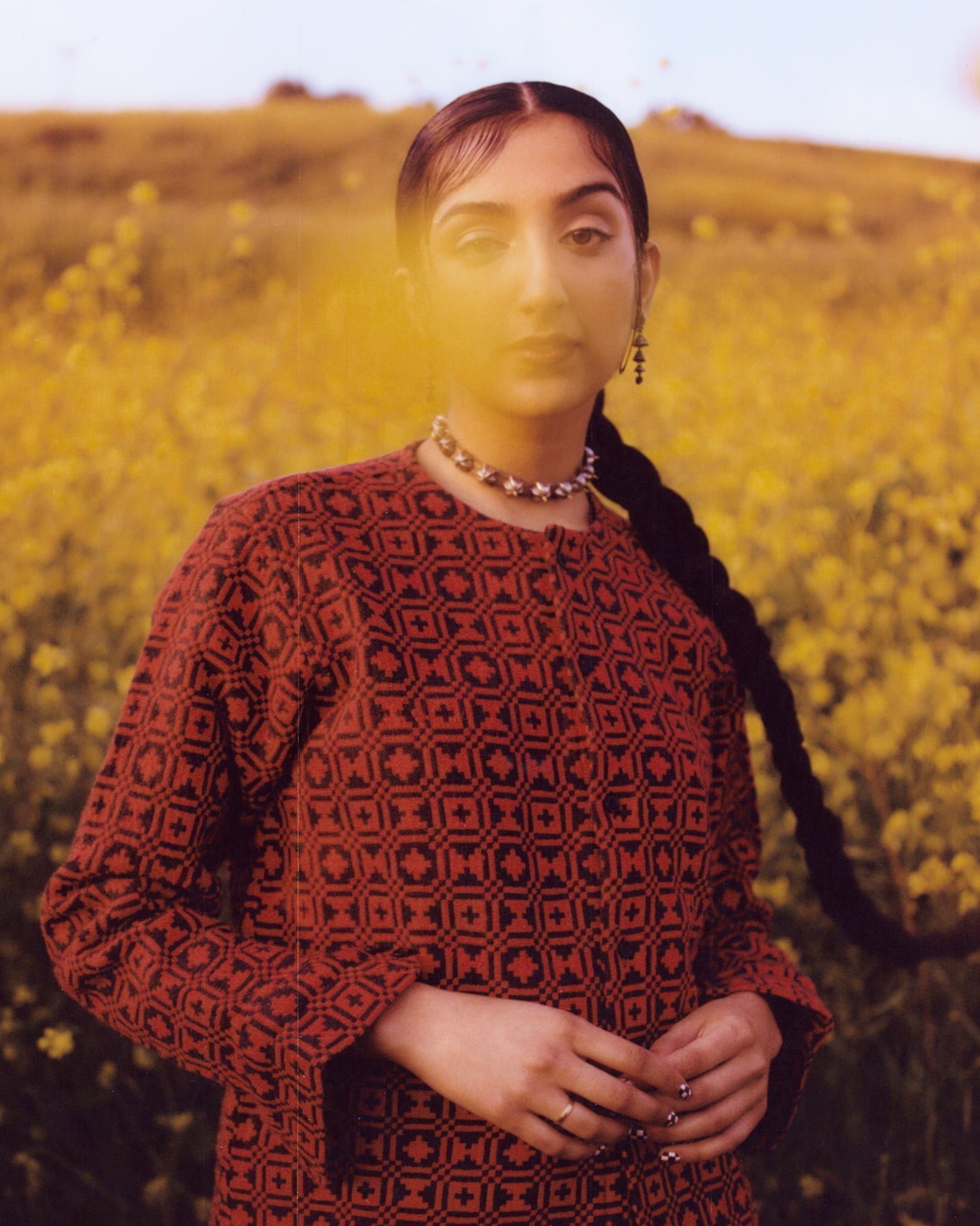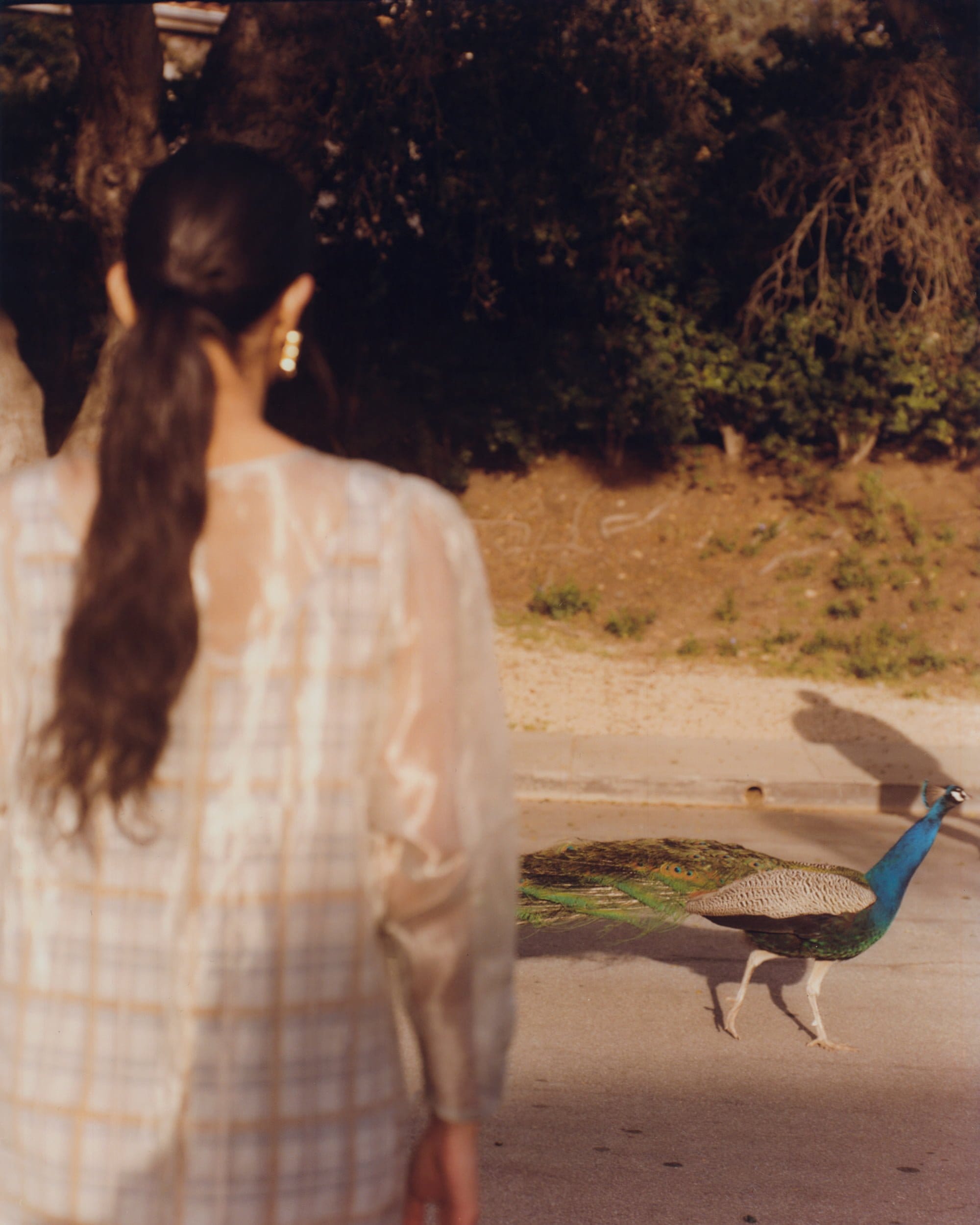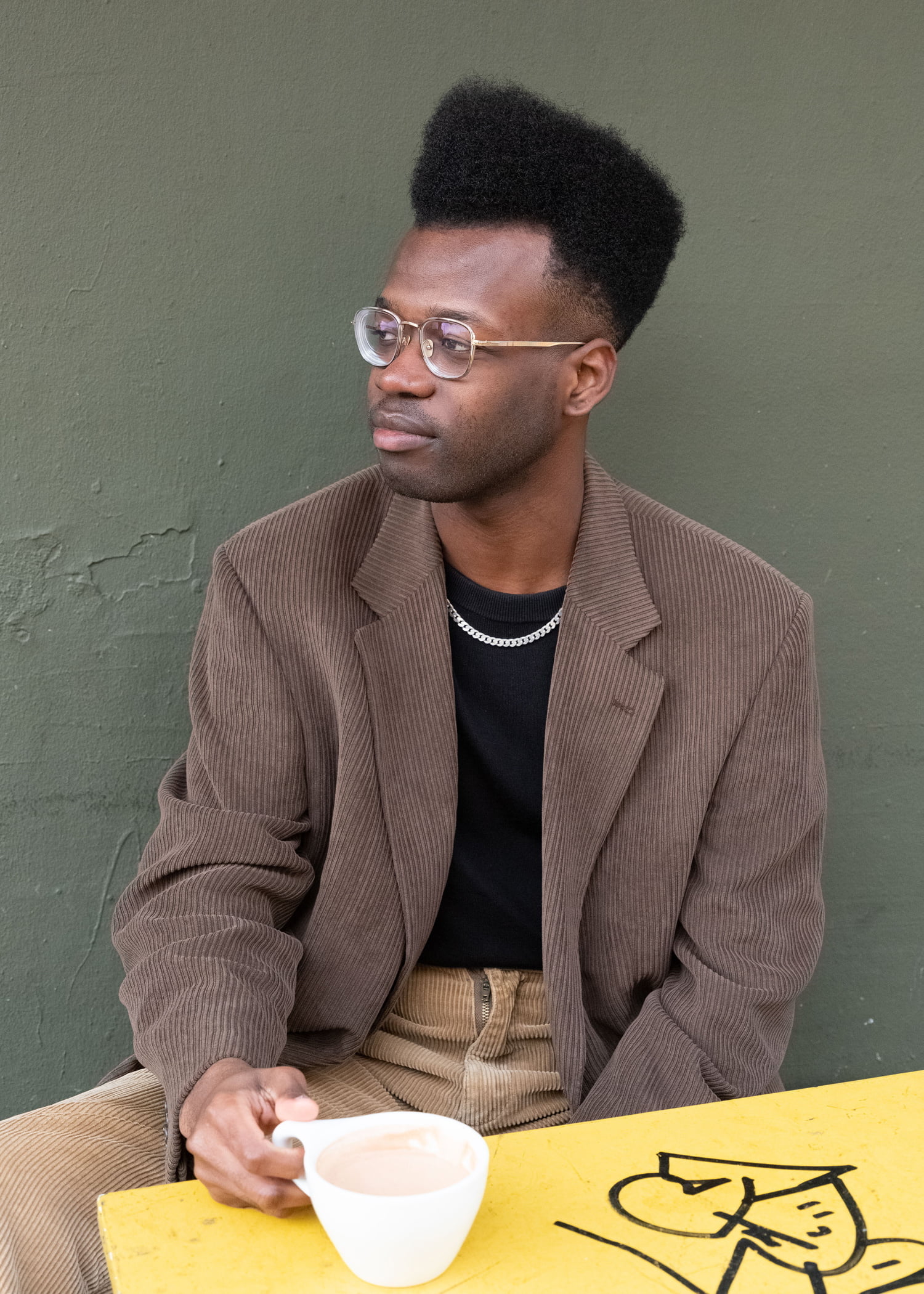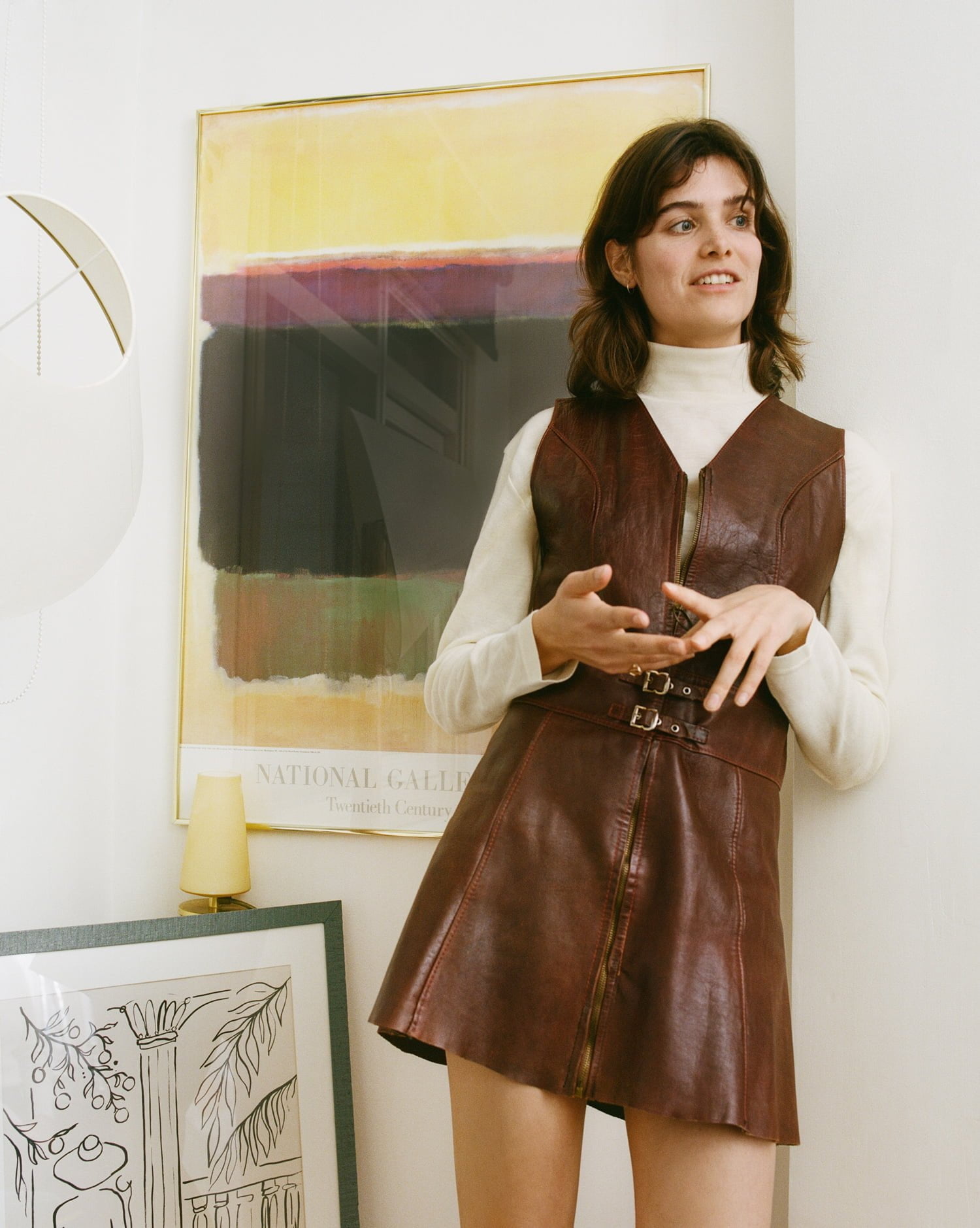For sustainable fashion advocate, photojournalist and influencer Aditi Mayer, sharing her latest look is so much more than a style statement. It’s a way to talk about the land and labour that go into our clothes.
From shots of sleek dresses in a sculptural LA garden to a ‘main character moment’ on a New York crosswalk, Aditi Mayer’s beautifully posed and styled Instagram posts sit firmly within the aesthetic realm of content creation. But for the climate activist and photojournalist, fashion and style are not an end point, but a means to understand and communicate issues like labour, culture, and environmental justice. It’s why she describes her work as a Trojan horse.
Mayer grew up thrifting with her mother and has fond memories of browsing the aisles for pieces to put together. “It always felt like a treasure hunt to me, and I think very early it honed this idea of personal style and the ability to put together looks when you don’t have a mannequin there telling you what’s in,” she says from her home in LA. Later, Mayer used fashion to make sense of her “hyphenated identity” as a South Asian teenager, and that thread of using clothes as an exploratory tool remains woven into her work ten years on.
“Fast fashion . . . has been a project of alienation. It stops to look at the pretty dress but doesn’t consider the stories behind it. If I can use fashion as a vehicle to make us think more intimately about the folks behind the things we consume, I think that’s incredibly powerful,” she says.

By subverting social media’s formula, Mayer secured her place in the fashion world. You’ll find her in the pages of Vogue and Harper’s Bazaar, speaking at events hosted by Billie Eilish, on the front row of fashion weeks, and styling for Stella McCartney, all the while making a case for a better fashion system.
A turning point
The catalyst for Mayer’s move from fashion hobbyist to fashion activist is one that many in the same sphere will identify with: the collapse of the Rana Plaza factory in Dhaka, Bangladesh on April 24, 2013, which killed 1,134 workers and injured over 2,000 more.
“When Rana Plaza happened, it was a time where I was really coming into my identity as a daughter of the diaspora, thinking about South Asian culture and my love for artisanship, but also being aware that what we thought of around India, South Asia, Bangladesh was sweatshops,” says Mayer, whose family is from Punjab, India. “Rana Plaza was this huge shift in the industry where suddenly you could not ignore the realities of how the fast fashion model was so extractive in nature and how speed created the conditions for all these human lives to be lost.”
“We don’t need more information, the science is there. We need more meaning”
Aditi Mayer
This is an industry that produces approximately 100 billion new garments each year. In the US around 85% of all discarded textiles are burned or landfilled. And workers in key garment-producing hubs are paid just 55% of a living wage.
As the shocking figures keep piling up, Mayer wants to move the discussion forward. “The work of reimagination needs to grow,” she says. “We don’t need more information, the science is there. I think we need more meaning.”
In the garment district of downtown LA, the injustices of the fashion industry hit home for her in a whole new way. The widespread implementation of piece rates — paying workers just a few cents per garment — meant that workers often took home less than 50% of the state mandated minimum wage. That, plus declining employment and revenue, informal contracting, a lack of regulatory oversight, and dangerous working conditions characterised the garment making industry.
“In my own family, there were people working in factories and exploitative conditions. I understood the nuances of what happens when you are undocumented and how you are preyed upon, but it became acutely clear that the fashion industry right in my own backyard was preying on all of these dynamics too,” she says. “Looking at the fashion industry through the lens of power, race, and histories of colonialism became my vantage point, and went back to my identity as a South Asian woman.”


Connecting the dots
Mayer uses that vantage point to trace fashion and textile production back to a time and place before fast fashion homogenised regional textile identities. And she doesn’t always have to look far. Her own grandmother once undertook every step of making dhurries — loom-woven rugs or tapestries — growing, spinning, and dyeing the cotton before meticulously weaving it into intricate decorative designs, but the practice largely petered out after her generation. She also sewed, knitted, and mended clothes as Mayer grew up in Southern California.
On a trip to Punjab with National Geographic last year, Mayer documented elders preserving the manufacture of dhurries, regional silk weaving, and spinning yarn on charkas (spinning wheels), and found a movement of elders rooted in protecting ancestral agricultural techniques such as mixed cropping, and rain-fed, synthetic pesticide-free growing.
She sees hope in strong communities like these. In LA, the garment workers she met were the architects of the protests and testimonies which culminated in the Garment Worker Protection Act, which eliminated the piece rate. In Punjab, farming communities that were forced into industrialised systems under British rule and pushed into planting cash crops in the 1960s, are now upholding ancestral farming and production techniques, providing a template for localised economies.
Thanks to such leaders showing the way, some change is afoot. The EU is creating a strategy for safe, long-lived and recyclable textiles, New York wants mandatory due diligence in the supply chain, and brands are falling over themselves to invest in fibre-recycling technology. But, Mayer says, more pressing issues like descaling production haven’t yet translated into the dominant industry. Most innovations are engineered to accommodate for overproduction and overconsumption, rather than supplanting it with a system that better suits people and planet.
Finding your niche
“Sustainability isn’t something you can buy, it’s an ongoing process of interrogating power and unlearning exploitation,” Mayer told Vogue India. It’s time we began to see ourselves as citizens, rather than consumers, she says.

The role we can each play in transforming the fashion industry depends on who we are and what community or communities we’re part of. “It’s grounding yourself in a topic that speaks to you and approaching that from a lens of community,” says Mayer, suggesting everything from engaging with garment worker hubs and doing the work of education, to supporting grassroots community efforts. “There’s so much to be said for a community that fosters a sense of collective change, so pick your lane and operate in that way,” she says.
Mayer’s lane is challenging the paradigms of influencer culture. She might be the face of her content but she shares her platform with a wider community: the artisans in Assam who weave the fabric to create the blouse she wears to Copenhagen Fashion Week, the farmers who grow the indigenous cotton for her breezy summer co-ords and the weavers who use handlooms to create the cloth to make her holiday looks. “There is a tension there perhaps between my love for beauty and creation and this work but that tension is one that I really enjoy. I love to embrace all facets of this movement, and I think it’s critical to make this space more inviting for everyone,” she says.
Dive into the facts and stats
Check out the Hot or Cool Institute’s revealing report on how to resize fashion for fair consumption.
READ IT HERE






